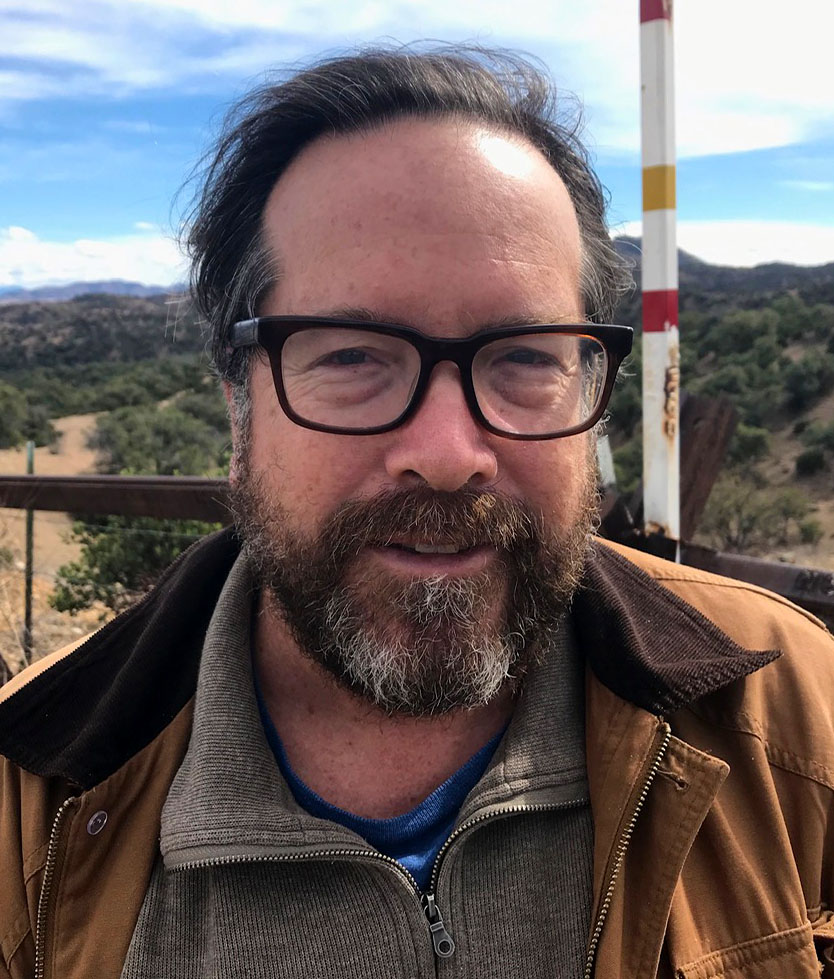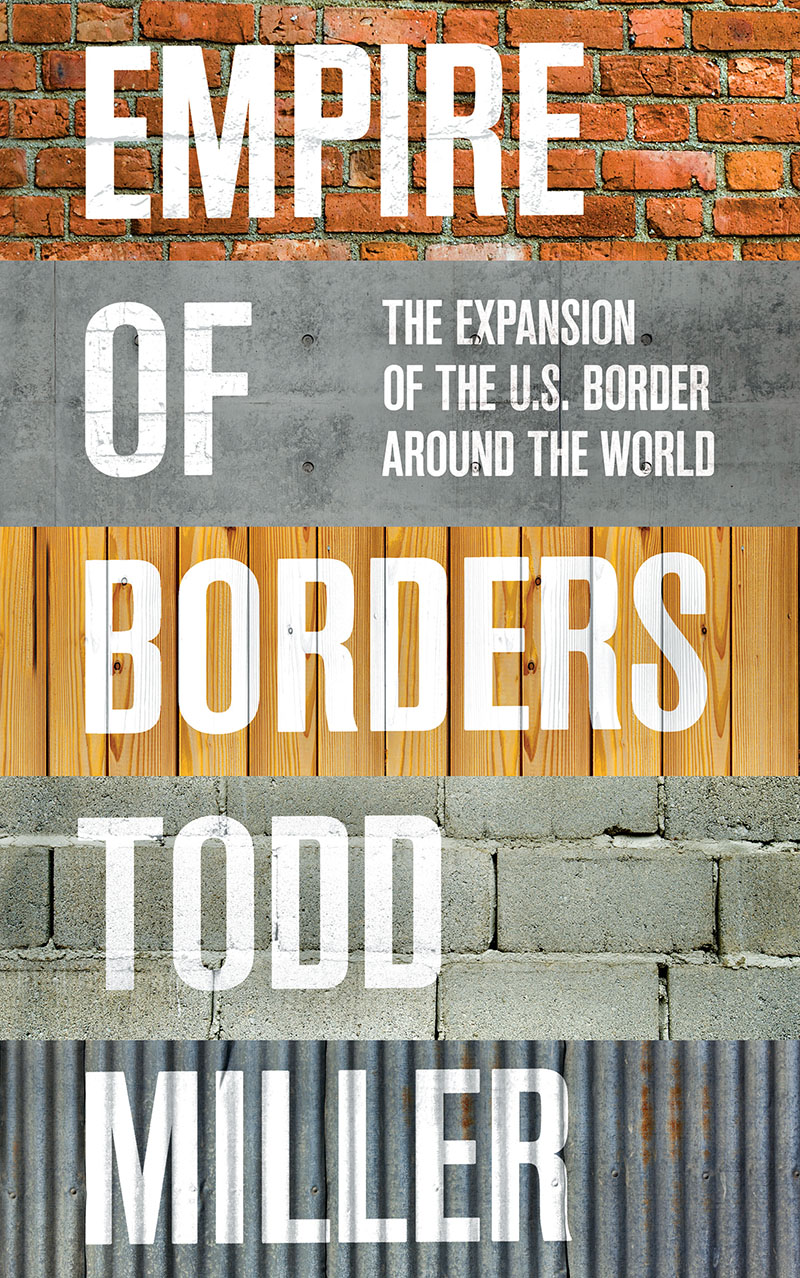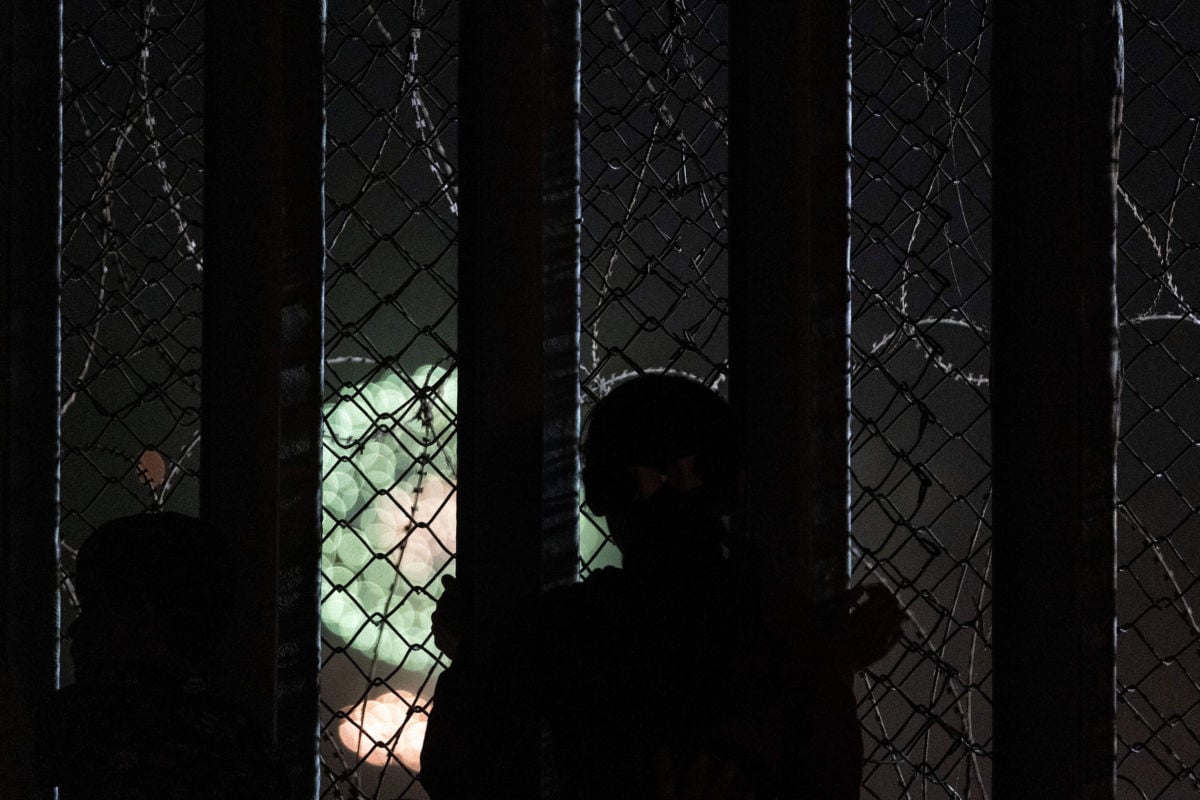Part of the Series
Progressive Picks
In this interview with Truthout, journalist Todd Miller explains why the United States is invested in the militarization and hardening of borders beyond its own territory. Miller is the author of Empire of Borders: The Expansion of the U.S. Border Around the World.
Anton Woronczuk: Your latest book provides significant material for rethinking just what a border is. Can you describe how writing Empire of Borders has changed your understanding of this peculiar human invention?
Todd Miller: One core understanding that I came away with was that the border has to be considered less as a place where an individual country demarcates and defends its sovereignty and more as a part of a fortifying global border regime. And to understand what this regime is and does, it needs to be expressed in its dramatic totality: More than 70 border walls, countless billions of dollars of surveillance technologies, hundreds of thousands of armed agents and more than 2,000 detention centers that incarcerate people for the crime of moving away from untenable situations, often from the Global South to the Global North. According to the International Organization on Migration, 32,000 people died or disappeared crossing such borders since 2014 – and that is an undercount, perhaps a drastic one, given that many deaths go unrecorded. All of this is in the context of more people on the move than ever before on Planet Earth, a number that is predicted to increase going forward as the climate crisis gets worse.
In other words, when considering the largest military operations in the world, international bordering has to be right up there. And this hardly means countries amassing armies to fight each other (although it does happen from time to time), but more a global harmonizing of border systems pitting the haves versus the have-nots, the disproportionately white versus disproportionately people of color, the environmentally secure versus the environmentally exposed, the elite versus the grass roots, business as usual versus a new vision, and ultimately the chosen few who benefit from the current global system versus the masses who do not.

The United States — with its particular type of global hegemony, with its economic system based on exploiting natural wealth and labor from other countries, with its 800 military bases around the world, and as the largest historical greenhouse gas emitter — has invested quite a bit into this international bordering process. Ultimately, what became clear as I wrote about the “multi-layered” strategy of U.S. border policing — and as I followed it as it extended through the Western Hemisphere, the Middle East, Asia and Africa — is that hardened borders are a part of a militarized scaffolding that keeps an unsustainable, if not untenable, global economic system in place.
Throughout Empire of Borders, you show the various ways in which profit and ideology animate the project of border security. Since its publication, you’ve also written a report detailing the money-making machine involved in maintaining what you describe as a “global caste system.” But does profit alone explain why the U.S. is so deeply invested in fortifying the borders of other countries?
I went to see expos first hand for this book in places like Tel Aviv, Paris, Mexico City and San Antonio. I would encourage people to check these out; they are astonishing examples of how industry and officials — often from multiple countries — come together to discuss and imagine the future of who can travel and who cannot. When you enter the convention center halls, banners hang down from the high ceilings with names of corporations like Raytheon, Elbit Systems and Lockheed Martin, to name a few. Maybe amid those banners is a surveillance balloon equipped with high-tech cameras in an active demo. If not, there will be plenty of robots crawling around on the carpets, drones the size of Frisbees or biometric systems, including facial recognition, iris recognition and digital fingerprinting. In a bustling Tel Aviv convention center, I learned about a Hummer-sized armored Unmanned Ground Vehicle called the B order Protector and witnessed high school groups listen to company reps fawn over their drone systems. At a Paris convention, around happy hour, I witnessed high-brow wine and cheese parties spawn throughout the giant hall, where people clinked glasses amid hyper-militarized, heavily-armed mannequins. Much of this machinery will be aimed at the world’s most vulnerable and most resilient people, including those who are unauthorized to cross the world’s sacrosanct lines of division. It is a massive money-making endeavor for an industry that is poised, according to one forecast about the global homeland security industry, to reach $742 billion by 2023.
But security industry profit alone does not explain everything. There is also another type of profit, as I saw during one such security expo in Mexico City: A representative of the Canadian mining corporation Goldcorp asked the commander of Mexico’s new Gendarme division (the commander had been talking just before about its joint operations with U.S. Customs and Border Protection) about the possibility of protecting their mining operation in the northern Mexican state of Zacatecas. It had been protested, blockaded and occupied by the local community, especially after they found out that that mine contaminated the water supply. And this is the other part: Borders are designed to protect business as usual, including the both historic and ongoing exploitation of natural wealth and labor by the Global North in the Global South. Suketu Mehta opens his great book, This Land is Our Land: An Immigrant’s Manifesto, with a story about his grandfather in the 1980s in London. When an angry British man asked him: “Why are you here? Why are you in my country?”, Mehta’s grandfather answered — who was born in India, and spent his working life in colonial Kenya — “Because we are the creditors. You took all our wealth, our diamonds. Now we have come to collect.” As Mehta explained, “We are here, my grandfather was saying, because you were there.” In many ways, border enforcement is a response to just that.
Do you find any significant shortcomings in corporate media reporting about the U.S. border?
I recently went to a panel with two New York Times reporters who had just released a new book covering the border during the Trump administration. Due to the reporters’ insider status as White House correspondents, they were able to uncover noteworthy stories about the Trump administration, such as Trump’s inquiries about digging an alligator-filled moat on the border or about shooting border crossers in the legs. But what caught my attention was when one of the reporters described border and immigration enforcement under the George W. Bush administration as an enormous and “emotional” debate about comprehensive immigration reform. I waited with anticipation, but not once did the reporter mention the 2003 implementation of the Department of Homeland Security, one of the most significant, and paradigm-shifting, moments in the history of the U.S. border and immigration apparatus.
The omission was astounding. All you have to do to understand the monumental build-up during the Bush administration is follow the money: Border and immigration annual budgets went from $4.2 billion in 2000 to $14.4 billion in 2008. There was the construction of 650 miles of walls and barriers (much more than Trump thus far, if you were wondering), the largest hiring surge in U.S. Border Patrol history (6,000 agents between 2006 and 2008, which also exceeds Trump), and billions of dollars went to a hyper-technological virtual wall, as well as bolstering a massive deportation regime. While there was a debate on immigration reform during the Bush years, people were also dying horrific deaths in the desert and ICE was doing pre-dawn raids into homes, dragging parents away from their kids.
But the omission was not surprising. And, since I don’t want to just pick on these particular reporters (and perhaps they elaborate more in the book), it’s but one example of how the border has been reported since 2017. It’s all Trump, history be damned. And since we didn’t report on it before then anyhow, nobody even knows. In this framing, not only does the Bill Clinton administration and its Operation Gatekeeper-type policies — that have been forcing people into the desert since the mid-1990s (a minimum 8,000 border crossers have died since then) — and punitive deportation laws get off the hook; so does the bipartisan nature of the build up. And there’s a reason Obama was called the “deporter in chief” by activists: His administration expelled and banished more people from the country than any other president ever. One of the New York Times reporters said the difference between Obama and Trump was that Obama administration officials were “torn up inside” about policies that “they thought were necessary,” but Trump officials were not. Maybe so, however whether it’s people dying in alligator and snake-ridden moats or traversing a desert where it’s not possible to carry enough water, the death and ultimately the xenophobic policies are the same.
At the conclusion of one chapter, you recount the experience of a journalist who was told by a U.S. Customs and Border Protection agent that his reporting will do nothing to change the status quo. Do you carry this concern when it comes to your own work?

In that case a CBP agent told Canadian journalist Ed Ou, who was en route to the United States to cover Standing Rock in October 2016, essentially that it didn’t matter that we detained you for seven hours. It didn’t matter that we tried to force our way into your phones. It didn’t matter that we didn’t let you board your flight nor enter the United States. And now it didn’t matter that you would now report on this. Of course it is dispiriting to hear an agent say that with such confidence, but it is also revelatory to the system CBP represents. To me this speaks to the institutional impunity in which this agency and department is operating. And really it is all the more motivation to keep doing profound, in-depth coverage of a border apparatus and its armed guards who think that they can get away with anything. It reminds me of when Donald Trump said he could shoot a person in broad daylight on 5th Avenue in New York City and it wouldn’t affect him. Such words would come from dictators over their fiefdoms who think their power is ultimate and unchallengeable, and that is where journalism comes in and is of uber importance, even if crass agents say otherwise.
You’ve been writing about borders for over 15 years. This is your third book about the subject. What keeps bringing you back to this topic?
Every book I’ve written and read about this topic has been an immense learning experience, and always seems to uncover aspects that I hadn’t thought about before. One thing is clear: Borders will continue to be a major issue in the 21st century and will impact huge swathes of people. First, if you just consider trends, in 1989, when the Berlin Wall fell, there were 15 border walls. Now there are more than 70, with two-thirds constructed since 9/11. Those numbers speak to a world in both a rapid and relatively recent phase of border militarization. Add in the climate crisis, and projections of potentially staggering numbers of people on the move as more places are rendered uninhabitable. In this scenario, border zones are not only poised to become even more violent and dystopic, but also simultaneously a location where there is a constant contestation of business as usual; and where cross border cooperation, solidarity and organizing offer a fertile place for a new vision of the world and possibly an example of how to do it. Borders are the places where people are reckoning directly with the shackles of a world organized into vastly unequal nation states. And this is what continues to draw me to the reporting again and again.
Our most important fundraising appeal of the year
December is the most critical time of year for Truthout, because our nonprofit news is funded almost entirely by individual donations from readers like you. So before you navigate away, we ask that you take just a second to support Truthout with a tax-deductible donation.
This year is a little different. We are up against a far-reaching, wide-scale attack on press freedom coming from the Trump administration. 2025 was a year of frightening censorship, news industry corporate consolidation, and worsening financial conditions for progressive nonprofits across the board.
We can only resist Trump’s agenda by cultivating a strong base of support. The right-wing mediasphere is funded comfortably by billionaire owners and venture capitalist philanthropists. At Truthout, we have you.
We’ve set an ambitious target for our year-end campaign — a goal of $250,000 to keep up our fight against authoritarianism in 2026. Please take a meaningful action in this fight: make a one-time or monthly donation to Truthout before December 31. If you have the means, please dig deep.
